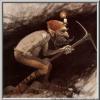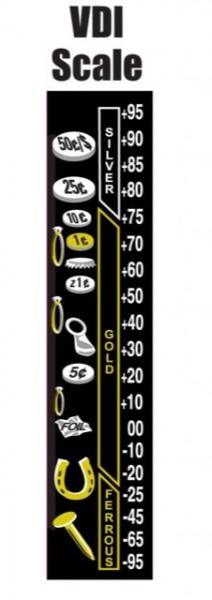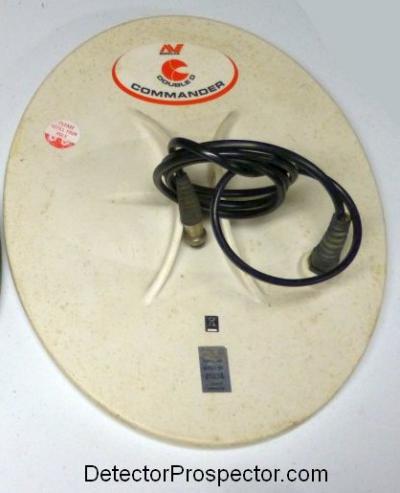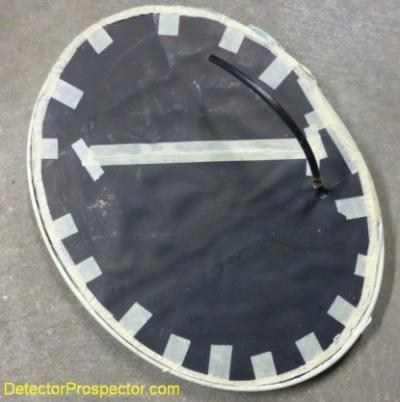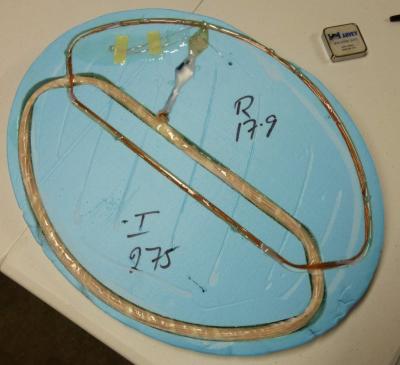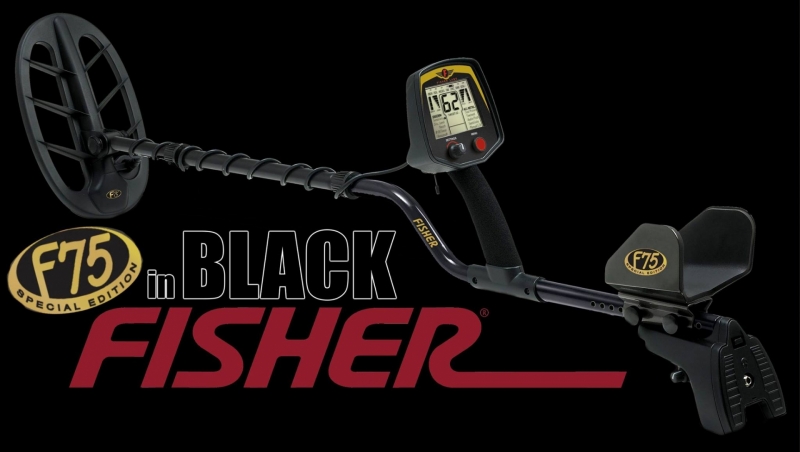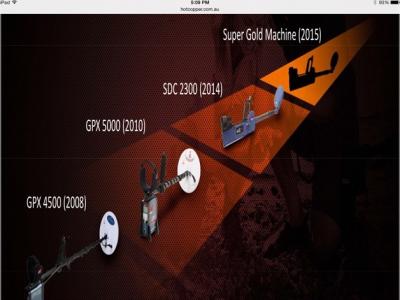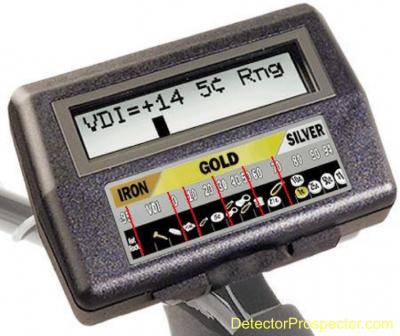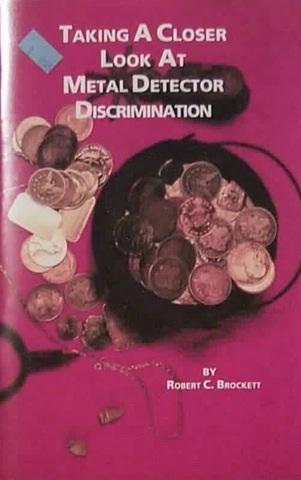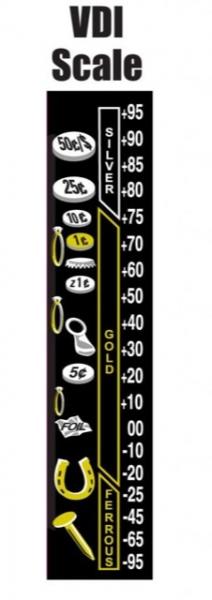Search the Community
Showing results for tags 'detector tech'.
-
Metal detecting and more particularly Gold nuggett hunting – it's different than other hobbies. You don't ask some guy riding around on the Harley or driving a quad or a bass boat how soon he plans to break even on his investment. They look at you like you were nuts – what a silly question – this isn't about money it's about having fun! Ou hobby is different. Treasure hunting is about treasure and discovering treasure is about the thrill but it's also about the money. A $10,000 metal detector is criticized on the grounds of how many ounces of gold you would have to find to pay for it. The satisfaction of owning the pinnacle of gold detecting technology – or the pure pleasure of hunting for and finding an elusive target – seem to mean less to us than they do to the golf club, quad offroader, bass boat crowd. I'm not saying it's a good thing or a bad thing – but it is a noticeable thing. I believe to some degree it's also a reaction against the fact that metal detector prices have long been based on the hope that the buyer has of financial gain and therefore - his willingness to pay a premium for a rather straightforward electronic gadget. It is the kind of tax on hope.
-
I heard this rumor once white had chance at buying out minelab, any truth to this? It was years ago.
-
There has recently been some discussion somewhere in the forums about 20-30 KHz detectors recently and their applications for prospecting. I ran across this while reading a link on a thread at NASA Tom's Forum, a quote by Dave Johnson, design engineer. "Metal detector manufacturers generally avoid the 20-30kHz range because of electrical interference from military communications." Here's the link to the interview- http://www.fisherlab.com/hobby/davejohnson/davejohnsonjohngardinerinterview.htm Merton
-
With modern ARM or similar type MCU's with some of the DSP capabilities built in and programming easily altered or updated I'm not sure I understand anymore why we are still stuck with the solid state mindset that x detector has to be y frequency only. A guy shouldn't have an issue switching to 60khz or 30khz or 7.5khz or whatever he wants without having to buy proprietary peripherals like special coils. This doesn't have a lot to do with the Makros in particular, but this line of thought leads me to really wonder when we see the first "open source" detector. IE, one that allows us to go in and hack around in the programming, and open source schematics so we can make custom mods without figuring out how to dissolve 5 layers of epoxy potting without killing the components or having to brute force decrypt MCU coding. So, since I know the Makro guys read this forum, if a company really wanted to take the next step and to be revolutionary in the detector world - provide us all with 2 open source platforms (meaning both software and hardware open source) - a PI and a VLF. Breakout all the relevant MCU pins too or allow easy access to hook up another dev board like the BeagleBoard, Raspberry PI, etc along with the interface to a computer for programming. Detectors, even Minelab, until the last few years have really been stuck in the stone age it seems to me any computer or phone nowadays allows for all kinds of mods and hacking. I think you'd see a lot of real interesting innovation happening by DIY'ers within a few years with a platform like this, and it might give Minelab some pause at offering detectors at (disclaimer, just a guess) $8,000 or whatever. Sorry to ramble, this post just got me thinking.
-
I did not want to get off topic on another post so I figured I better start a new one to find out the answer to a reply Klunker made " My thanks to Nokta for communicating with the folks that actually use detectors. Gold brick;- I have a P.I. detector that has nearly 100% accurate discrimination." O.K. klunker, I'll bite . Although I know it is probably a mistake and I am gonna get Klunkered for some reason I can not help but ask the question " Pray tell, what PI would that be, Klunker?" I think I am gonna regret getting up this morning............
-
Hi guys! I asked for advice on choosing a forum detector (http://www.detectorprospector.com/forum/topic/91-choose-detector/#entry632) . I was planning to buy an inexpensive VLF detector. But I got a bonus at work and bought a used GPX 5000. I went with this detector on some old gold deposits. I found 6 nuggets total weight of 6 grams. GPX 5000 detector is good, but I dug a lot of iron objects. I lost a lot of time digging for iron things. Gold mines are very old, so the soil forged nails, small pieces of wire. I think in addition to the GPX 5000 I need a second detector. The main requirement for the detector - good discrimination. Now I look at the detectors: 1. Whites MXT 2. Whites GMT - because things are little nuggets (less than 1 gram). Am I right to think ?: GMT will be deeper than GPX to 0.5 grams of gold nuggets? 3. Minelab X-terra 705 4. Minelab Explorer SE 5. Fisher Gold BUG Pro/F19. This detector (thanks to Steve for information) shows VDI targets all metals mode, it's good! I know what to look for in the "all metal" because discrimination reduces sensitivity. But I would like to be able to include disc. whenever I want. What do you think of the detector to hunt for nuggets in the tailings. Any thinking please!
-
I see this over and over on the forums. People requesting that this machine and that machine be air tested on a dime to see which gets better depth. All it really does is tell you how well the detector can find things in the air, but I do not use a detector for that myself. I do a lot of air tests, but I am only looking at depth from a relative perspective and not as how two different models compare for depth in the ground. In other words, if I have two Gold Bug detectors and set up identically if one gets far less depth than the other there is a problem with the detector. Detectors will rarely detect deeper in the ground (I did not say never) than they do in the air, so if a detector air tests on a dime at 10" I am not going to expect it to do better than that in the field as a general rule. If a detector cannot detect a tiny nugget in an air test, I do not expect it to get that ability in the ground. Air tests generally tell you about a detectors maximum possible performance, and in the ground things will usually go downhill from there. I also like air tests to learn how a discrimination system may identify certain items since different detectors use different sounds and id number scales. Very often I just want to hear how the detector sounds. Is the signal modulated or boosted? Does it employ VCO audio? Short chirps or big booms? I have to listen to the thing all day long so I prefer something that is pleasant for me to listen to. Air tests can also teach me a lot about how a coil responds, especially to small targets which do radically strange things under DD coils at close range in particular. Depth though, when we are metal detecting, is all about how detectors handle ground. In fact there is almost nothing more important than how the detector handles the ground. Without the ground, depth tests can mean nothing at best and at worst can be quite deceiving. With VLF detectors low frequency models generally handle ground better than high frequency detectors, but high frequency models often air test very well. A Fisher Gold Bug 2 air tests really well, but the depth in ground drops off faster than most any other detector made due to the very high 71 kHz operating frequency. When I was up at Moore Creek I had a guy insist that the Fisher Gold Bug 2 would detect a large nugget deeper than a Fisher F75 because, by golly, he had air tested them. No amount of talk would convince him otherwise, so we buried a 1/4 oz nugget and the F75 easily hit it deeper than the Gold Bug 2. The guy was amazed by something I thought would be very obvious. I forget people do not know how metal detectors work and the effects of the ground at different frequencies. It is not always true but a generality is low frequency detectors will tend to retain depth better in ground than high frequency detectors. Pulse induction detectors are sort of like super low frequency detectors in that ground is relatively invisible to them. Not totally so by any means but compared to a VLF a PI has built in ground capability just because of the way they work. Often a PI detector will not air test very well compared to a VLF, but put them in bad ground, and the PI loses very little if any depth while the VLF takes a big hit. The worse the mineralization the worse the VLF does by comparison to the PI detector. So another generality is that pulse induction detectors do not air test well compared to VLF detectors. A lot of very good but less expensive coin detectors have no ground balance control. They air test just fine against far more expensive detectors. Put them on bad ground however, and the lack of ground balance control just kills them. Something rarely ever discussed is ground balance systems and how they work. Ground balance methods vary and often are proprietary and closely guarded secrets. These days it is far more than just a knob. Detectors like a White's GMT or MXT were among early models employing software algorithms to ground balance the detector. Minelab multi-frequency detectors employ very sophisticated ground balancing methods that help account for how well those machines work in differing soils and even saltwater environments. They are designed with the goal of delivering accurate target id information as deep as possible as opposed to absolute depth and the accuracy they deliver is cutting edge. Ground balancing and accurate target id go hand in hand. It should be obvious that a detector that has factory preset ground balance is going to suffer in bad ground. But past that point, what do you really know about the ground balance method employed by a detector and how good it is? More importantly, how is air testing going to help teach you about it? Yet another generality is that multi-frequency detectors do not air test well against single frequency detectors. You can go farther and just say air tests teach you nothing about ground handling capability. The degree and efficiency with which a metal detector handles the ground conditions it encounters is the most important thing there is when it comes to depth in the ground, and air testing does nothing to reveal this most important attribute. It is very easy to have detector A go twice as deep in an air test as detector B and see the situation reverse in the field. In theory if you air test two detectors, both the exact same model, and they air test the same then they should get the same depth in the ground, right? But what if one detector has a ground balance system that is not functioning properly? They air test identically but one still performs poorly compared to the other in the ground. The absolute most important advances in the metal detecting world have been in ground handling and most of the real breakthroughs in recent years have been in pulse induction detectors employing very advanced methods to deliver depth unmatched by other detectors. These advances are only apparent in the worst ground conditions and so leaving the ground out of the testing is nonsensical when you think about it. To sum up, we use metal detectors to find items buried in the ground, and when prospecting in particular highly mineralized soil can have severe impacts on detection depth. Only in ground testing has anything like any validity, and even then freshly buried target responses are suspect due to the ground being disturbed. Even buried test targets however are far preferable to air tests. A lot can be learned from air tests, but how a detector will perform in the ground is just about last on the list when it comes to relevance.
-
I remember when I purchased my 1st metal detector, a GP 3500. My family and friends thought I was insane to pay over $3000 for a metal detector LOL. It was instant love for me when I held her in my arms. Yet just like when the shine is wearing off your most recent girl friend and some habit of hers is starting to bore a hole in your brain..........it did not take long for me to tire of packing that lead acid battery around. What did that thing weigh? 9 lbs? Before you could say Pocket Rocket, I had one hanging off the side of my Baby. Now it is almost 2015 and battery tech has advanced by leaps and bounds. I know next to nothing about how the engineers have done this but I know the batteries in my XP Deus must be something special to weigh so little but pack so much punch. Will it be battery technology that will finally allow a new PI to offer performance close to what Minelab PI's are famous for yet weigh under 4 pounds? Is this a realistic goal to ask of metal detector manufacturers? We may soon see some interesting PI machines marketed. Fisher is working on one as is Nokta/Makro promising PI and hybrid machines. Nokta/Makro is shaking up the VLF world through their customer service and quality manufacturing and would it not be wonderful if they provide some real competition to Minelab? Personally, I believe if a manufacturer can develop a lightweight PI with improved discrimination it does not have to obtain the impressive depths Minelabs are capable of. If I can ignore most iron and dig more non-ferrous targets even though I occasionally miss deeper nuggets I am going to have more gold in my poke at the end of the day on a consistent basis. Some desert gold hunters might disagree and maybe rightfully so but if you hunt in areas where logging has occurred I surmise you may concur. Just as the Minelab 2300 has taken the prospecting community by storm by finding more small and/or spongy gold while giving up some capability on big, deep nuggets, a PI with improved discrimination is going to allow you to dig more gold and less nails, wire, and degraded cans. You would effectively view more dirt in a day by not spending so many of your precious prospecting hours digging ferrous targets. JMHO Merton
-
Like many nugget hunters I cut my teeth in this hobby on PI machines. If it beeps you dig it. As time goes on we may not have the physical attributes we once had. I know if I dig 6 DEEP nails I am about done for awhile with the PI. I am likely to start using a VLF if one is handy (or take a nap LOL). The Question is- which VLF to grab? Every detector has certain attributes that make it more or less attractive for nugget hunting. I had been pondering this subject because I was contemplating buying another detector, specifically a Notka Fors Core. I need another detector like I need a hole in my head but I just like detectors and find them interesting. Recently I sold my MXT to my Brother-in-law so he could start coin and relic detecting, so I have room in the RV for a new detector. I hardly used my MXT as I would grab either my Deus, GBII, or GB Pro along with my GPX depending on what I had in mind for the day. Frankly, the MXT is just too heavy when there are light weight alternatives available. So let's talk about my possible purchase. I had a laundry list of features I hoped to get. Light weight, dependable, VID in All-Metal Mode, fast target separation in trash, and adjustable low tone break. I would love to have accurate VID in hot ground but that's just wishful thinking. I have been closely following the informative discussions on this forum started by Steve H. and on the Nasa Tom forum posted by some smart coin and relic detectorists about tone breaks, target separation, target masking and mineral degradation of targets. What is sticking in my mind is the adjustable low tone break. Just how important of a feature is it for nugget hunters? Obviously not very important if you only hunt in All Metal when using your VLF. Myself, I love to hunt around the old habitation sites and mines in gold country. A lot of times these are the only areas that have not been beat to death due to the extreme amount of trash. Plus I enjoy finding old coins and relics right along with the gold, it's all treasure to me. Due to the amount of trash around most of these sites All Metal Mode even with a VID on the screen is not my preferred option. I just do not enjoy detecting with eyes glued to a screen so a mode with two tones is my choice. But we know that gold co-located with ferrous or small gold in hot dirt can read down in to the ferrous TID range. So we need to adjust our low tone break somewhere into the upper ferrous range to ensure we don't miss co-located or deep gold. If the detector you have purchased does not have an adjustable break point and is factory set at ferrous/non-ferrous how much gold will you miss because it gave a low tone on those nuggets in the midst of trash? Or the DEEP nuggets at the fringe of detection in hot dirt? I do not think we can answer that question in a quantifiable manner but we should be aware that it is occurring. How high should we put this feature of adjustable tone break on our laundry list of detector attributes? How much will it drive up the price of the detector to get it? By thinking about the tone break and weight issues I believe I talked myself out of buying a detector and saved a grand. LOL The Notka is kind of heavy and does not have adjustable tone break to my understanding from reading the manual. If I am mistaken please correct me. I may have to wait for Notka's promised PI before purchasing from them. Obviously I put the Tone Break Issue near the fore front of my desirable attributes I would like to see a VLF have. I may just have to stick with the GB Pro and the Deus as my VLF nugget machines for now as they both have that feature. There must be other mid-frequency detectors with adjustable Tone Break, is the CTX one? Merton
-
Has anyone here ever seen a convincing demonstration of long range detectors, the Electroscope Regulator for example? Seems to me to be a scam but I know very little about them and could easily be wrong. I would really like to hear about you're experiences with them. Thanks in advance!!!
-
Minelab has a lot of critics that accuse them of "drip feeding" us the technology. The SD 2000 was introduced in 1995 followed by the SD 2100, SD 2200, GP Extreme, GP 3000, GP 3500, GPX 4000, GPX 4500, GPX 4800, and finally GPX 5000. As if any of the critics have ever brought a successful product to market and then tried to make genuine improvements to it. It is not as easy as it looks. Genuine breakthrough products are very rare in the metal detecting industry, so most of what takes place is just tweaks and twiddles of the breakthrough after it occurs. Yet I would submit that although the improvements were incremental, the reality is Minelab with each succeeding model did make genuine improvements. These have added up over time to where the gulf between the original SD 2000 and GPX 5000 is quite considerable. Night and day really. See my page at http://www.detectorprospector.com/gold-prospecting-guides/steves-guide-differences-between-minelab-sd-gp-gpx-models.htm for details on the differences in the Minelab models. Now let's take a look at White's Electronics recently. The White's MXT was introduced in 2002. Then we got the MXT 300. Exact same detector with a matte black paint job and a larger coil. Then came the MXT Pro. The MXT Pro added multi-tones and a meter backlight plus a redesigned pod with a touch pad. Nice touches but the actual detecting modes offer no change in actual performance. It is still just an MXT. Then we get the MXT All Pro - another change up in the coils offered as standard. Along the way we got the M6 and the SST, which are stripped down feature limited versions of the MXT. That is 6 models over 12 years, not one of which is any better at detecting a target than the original MXT. Finally, in 2014 we get the MX5, which not only gets a new housing but a faster processor. Finally, a genuine functional difference. Sadly, they locked it into ground track mode and narrowed the possible ferrous range settings to just a few, making it hard for me to consider it an improvement. I guess I will wait for the MX6. I honestly am not trying to pick on White's here. At least they are mixing it up a bit. That is better than the situation with the poor Garrett Gold Stinger, neglected and unloved since 1990. Coming up on 25 years as the detector with the worst battery replacement scheme in modern detectors. It really has functionally been replaced by the AT Gold, but the Stinger lives on, the model that wouldn't die. All the manufacturers are guilty, or none of them are guilty. It is just the way the consumer electronics industry works. Apple and Android put the metal detecting industry to shame when it comes to continual drip feeding of incremental improvements designed to keep people on the upgrade path forever. With the added double whammy of new software or apps that will only work well on the newer hardware which almost forces an upgrade at some point. At least that old Stinger will work for as long as you want to buy batteries for it!
-
I have an application for a specialized metal detector coil. I want to use a Whites MXT to provide ferrous/non-ferrous discrimination information on targets which are deeper in quartz than common metal detector depths (2-30 feet). These targets were not found with found a metal detector. I want to insert a metal detector probe encased in PVC pipe into a 2” dia hole bored into the quartz. Reading Carl Moreland's “Coil Basics” tutorial at http://www.geotech1.com/cgi-bin/pages/common/index.pl?page=metdet&file=info.dat it seems to me one of the figure 8 configurations would work well in this application. I would insert the probe on adequate length sections of PVC into the drilled hole and connect to the MXT. I’m armed with no metal detector probe building experience, a lot of RF experience, adequate test equipment. Will this idea work in general? Is one of the figure 8 configs the right topology? Any other hints on making this probe before I start? What distance from centerline of 2” dia drilled hole can I expect to discriminate on a US nickel sized object for ferrous/non-ferrous?
-
How important is a warranty? Are defects common in metal detectors? Should a warranty or lack of one be a big influence? Those of you who have owned many detectors, have you had many failures?
-
VLF metal detector discrimination works well on isolated targets in an air test. The problem is in the field what is reported by the detector is the sum of everything the coil "sees". This means the ground mineralization, the gold nugget (or any other item you are trying to find), other metal under the coil at the same time, and even electrical interference. Sweep speed matters also as does the angle of the item in the ground and the direction from which the coil approaches it. Add it all up, and it is a miracle discrimination works at all, and the reality is it is wrong very often. Almost any ground with iron mineralization will cause non-ferrous items to read as ferrous. Usually it is something that happens right on the edge of detection depth. However, the more iron mineralization, the less depth it takes for the item to flip over to ferrous. It does not matter how large the item is either. Small non-ferrous items are more prone to reading ferrous but even very large items will flip in very bad ground. Bury a two ounce nugget deep enough in bad ground, and it will read ferrous. The ground mineralization pulls the VDI numbers down, and the deeper the item is buried, the lower the VDI number gets until it passes into the ferrous range. This happens with coins when coin detecting. A person using discrimination is looking for items that read in a certain number range. The problem is that mineralization pulls those numbers lower and then the items reads instead as a trash item, and is left behind. The simplified explanation is the detector is seeing a little bit of non-ferrous signal and a lot of ferrous ground signal. The White's GMT is a rare machine that tries to show you this graphically. It will say a target has a 40% chance of being non-ferrous. Most machines have to call it one way or the other and in this example just go ahead and call it ferrous. Which is it? Ferrous? Or 60% chance of being ferrous? Would you dig something if you knew it had a 40% chance of being a nugget? A picture says it all. See the one below. This is such a well known thing that White's has for a long time shown it on their simplified VDI (Visual Discrimination Indicator) scale. On most White's 1 through 95 indicates non-ferrous, and the negative numbers -1 through -95 indicate ferrous numbers. Notice how ferrous readings as low as -20 could indicate gold. Yet nearly everyone using any discrimination at all will tune out this range to eliminate finding small ferrous trash. This happens on all VLF metal detectors that employ discrimination. Good old Ganes Creek, Alaska is a VLF test bed on a massive scale. Tons of ferrous trash is buried intermingled with gold nuggets in tailing piles. The ground is not all that mineralized and VLF detectors work well there. Because the hunting was pay-to-mine competition style a VLF made more sense than digging hundreds of ferrous targets with a PI while your buddy was cherry picking nuggets around you with a VLF. The reputation of the White's MXT as a nugget finder was largely built at Ganes Creek, but many other VLF detectors did well. I saw a couple things over and over at Ganes Creek. First, we ran detectors in either of two modes. Dual tones with low tone ferrous, high tone non-ferrous was the most popular. Or there were some who ran in all metal mode then analyzed the target VDI once located. I did both. In either case you could get two results very often. In my case running a F75 in all metal I would get a target. I would then sweep it and watch the meter VDI numbers. What I learned is if there were five sweeps that said ferrous and just one that read non-ferrous, then dig it. Most people are looking for reasons not to dig. Getting five readings ferrous and one non-ferrous, most people would take that to mean a ferrous target. What I found more often than not is that if I could just get the target to read non-ferrous even once, it was worth digging. These were usually items reading borderline anyway. The only stuff relatively safe to walk away from is items that give strong ferrous readings repeatedly. With dual tones the same thing applies. If you get five low tones but then get it to bounce high tone even once, better dig it. The real proof was the simple kick test. You go along, get a ferrous indication, and kick a couple inches off the surface and bingo! the ferrous item turns non-ferrous. Pretty amazing stuff. Keep in mind folks, this is relatively mild ground! What not to do. If you take any detector and tune it to completely ignore ferrous targets, you are in big trouble. The Gold Bug 2 for instance. If you flip to Iron Disc mode iron targets are ignored as if they are not there. Yes, some will click or pop but most simply get ignored. Any detector with a simple knob, like a Tesoro Lobo in disc mode, you can turn up until a small nail will be ignored. Hunting directly set up to reject ferrous is very problematic. Now you can find gold doing this. I have and many people have. The problem is as you go along you only get one chance at the target. If you hunt in all metal, you will always get the target, and then you can analyze at your leisure, or just dig it up. In dual tone you will always be alerted to the target, so you can check it again. But if you set to reject, and the detector makes a bad call on the first sweep, you pass over the target and never know it was there at all. Part of the problem is in targets that you only get partly over on the first pass. For the discrimination to have its best shot, you need to be centered on the target as much as possible to get the strongest signal. An on edge pass will usually be wrong, but if you are alerted you can make multiple sweeps to get centered on target for the best reading. Any detector running in disc mode will have a search field that is more limited in extant than that you experience with the detector in true all metal mode. In disc mode you need to be well centered. In all metal, the coil reaches wider and deeper to gather signals. The reason I usually run in all metal is it gives me the best chance of capturing the target, then I can decide what to do with it. Running directly in disc gives you more chance of missing the target entirely. Keep in mind these issues vary wildly with the amount and type of iron mineralization in the ground. I saw some ground in Alaska recently that you would not think was very mineralized. No intense red colors, not much in the way of hot rocks. And yet there was something about the iron in the ground that made fairly large nuggets and even .22 shell casings read as ferrous when sitting directly on the ground in plain sight! Very, very scary stuff. Now having said all that, there are times I will crank up the disc and eliminate the signals. Sometimes they are overwhelming in number and it is the only way to deal with it. Maybe I am just tired and not in the mood to analyze every target. Maybe time is very limited and I need to do a quick cherry pick run of the ground. There are no absolutes in metal detecting. The main thing is to have the knowledge required to make the best choices you can, to get the best odds for the situation. Hopefully this little article will help. For more technical detail see Metal Detector Basics and Theory by Bruce Candy / Minelab. An excerpt: “In goldfields, discrimination is required only against ferrous targets, without any time constant discrimination, as gold nugget time constants include all values from very long to short. Unfortunately, X discrimination in goldfields has several major problems: Most productive goldfields are extremely mineralised, and thus the soil X signal is extremely large. As was stated earlier, it is only possible to assess the target X signal if this is comparable to, or greater than, the soil signal after filtering. In such extremely mineralised soil, this will only occur when the target signal is also very large which means the target must be close to the metal detector coil. Hence, discrimination in highly mineralised goldfields is only effective for targets buried at shallow depths. The discriminator action must be very conservative so that gold nuggets are not falsely discriminated as ferrous targets. Thus, the metal target signal must not only be comparable or merely greater than the soil X signal after filtering, but significantly greater so that there is no doubt whether the metal target is ferrous or not. This further reduces the depths at which targets may be discriminated.” Related Threads/Posts: What Is Metal Detector Discrimination? Target ID More About Size, Than Type Of Metal Metal Detector Discrimination Really Sucks Metal Detectors With Reliable Target ID Numbers The Ferrous / Non-Ferrous Overlap European Detectors Versus U.S. Style Detectors On Target Masking Metal Detectors With Reliable Target ID Numbers
-
If you have been following my Garrett ATX rebuild thread at http://www.detectorprospector.com/forum/topic/462-garrett-atx-strip-down-rebuild/ you will have seen that I sacrificed a Minelab Commander 12' x 15" DD coil for the project. So may as well get an education on what Minelab has in there! First the coil, then with top cut off. The inner portion is completely wrapped in conductive paper which creates the electrostatic shielding. Tear that all off, and you see a foam oval. Flip it over, and incised into the bottom are the coil windings, with the distinctive back to back Ds. A bit of detector mythology has it that the DD refers to the initials of a guy named Donald Dykstra that supposedly had something to do with DD coil design, but I think that has been discredited. http://compass-metal-detector-forum.548136.n2.nabble.com/Compass-and-quot-THEIR-quot-own-DD-coil-information-td7598726.html I believe, and JP can correct me if I am wrong, that Commander coils always used Litz wiring http://www.globalspec.com/learnmore/electrical_electronic_components/wires_cables/litz_wire They never really touted it nearly as much as Nugget Finder later did, and now Coiltek with their recent coils offering Litz wiring. I think Commander coils in general have not gotten the attention they deserve, as people seem to assume aftermarket is always better. Something I am a bit doubtful of myself. The main problem with Commander coils really has always been that they are heavy by comparison to some aftermarket alternatives. That, and because Minelab has in general forbidden bundling Minelab product with Minelab coils dealers often promote other coils. Anyway, now you have had a look under the hood!
-
Here is a subject you will rarely see. What makes for a good looking metal detector? There are many I have swung over the years that were downright embarrassing. Maybe that is why I try to make sure I detect when nobody can see me! These days though there are some good looking detectors out there, kind of like the sports cars of the genre. My favorite - the F75 Special Edition, also called the Limited Edition. Fisher can't make up its mind.
-
Did my "Dawn Patrol" of Forums just now and this popped up. http://golddetecting.4umer.net/t20225-no-new-gold-detector-from-minelab-any-time-soon The page that they linked to seems to be on-again-off-again, but I got this screenshot of most of it. My screenshot didn't get the whole page, so I have copied a pic of the rest from the Aus. Site here. A couple of interesting things. No discrimination and not waterproof, even though it looks like the CTX. UPDATE EDIT - It looks like putting that info on the comparison page as a machine you could run a comparison on was an error on ML's part. It has now been removed. Oh well. IMPORTANT NOTE FROM STEVE HERSCHBACH - This is an unusual situation. In case you have not figured it out, Minelab has a new flagship detector in the works. A mistake was made that put the specs up live on the Minelab website, where screenshots were captured and posted online, including here. Minelab has requested that the information be deleted as it is not vetted for public release at this time, and out of respect for their wishes I have complied with this request. However, the deletion of the screenshot and spec list from the other website is as far as this editing goes. Those that have seen the information may feel free to continue to post about it or speculate on it. You saw what you saw and I am not going to play whack-a-mole or do anything else by way of dealing with the information leak. My sincere apologies to Rick Kempf for modifying the post as I do really appreciate seeing it! However, it does appear to have been an honest mistake by somebody and I have no wish to cause them any grief beyond whatever they are already suffering.
- 8 replies
-
- detector tech
- minelab gpz 7000
-
(and 1 more)
Tagged with:
-
I do wonder what is up at White's Electronics. They have not put out a new detector platform since the V3i in 2009. Just rehashes of the MXT mostly. Yet they have been extremely busy on the research front, with the patent issued on half sine technology earlier this year http://www.detectorprospector.com/forum/topic/118-half-sine-metal-detector-technology-hybrid-induction-balance-pulse-induction-metal-detector/ And now a new patent for a constant current metal detector: http://www.google.com/patents/US8878515 United States Patent 8,878,515 Earle November 4, 2014 Inventors: Earle; John L. (Sweet Home, OR) Assignee: White's Electronics, Inc. (Sweet Home, OR) Family ID: 51798186 Appl. No.: 13/235,916 Filed: September 19, 2011 SUMMARY OF THE INVENTION The new invention provides better target object characterization and identification while eliminating ground mineralization detection. A constant current in the energizing coil establishes a constant magnetic field that goes from zero to a strong, but constant, field very rapidly, as in less than 10 microseconds. Target objects such as coins and other eddy current objects have an energizing time constant usually exceeding 10 microseconds, wherein the eddy currents accelerate until field equilibrium is reached in the target object. A constant current or constant magnetic field does not produce a significant signal in a receive coil after the transition from zero to constant current from ground mineralization permeability (powdered iron or ferrite equivalent). Target object eddy currents do produce a signal of varying amplitude throughout the constant current period, depending upon eddy current charging time or inductance of the object, usually not a simple exponential due to configuration of the target object. i.e., diameter, thickness, conductivity, etc. It will be interesting to see if these patents result in any actual product. People often make the mistake of thinking a patent means something is ready to hit the shelves and the truth is just the opposite. Patents are often filed and nothing ever comes of it. Or it gets licensed to others, who actually produce the goods. Who knows what is going on in this case, but White's is obviously still attempting to move the technology forward. I hope the best for them as they are an old name in the business and a great bunch of people. What makes this doubly interesting is Minelab also has patents in the works on constant current technology. http://www.detectorprospector.com/forum/topic/311-minelab-bruce-candy-new-patent/?p=2291 The Minelab work is an application for patent that has been in progress since 2009. This White's deal is an actual patent granted. Is there conflict here? Obviously with these two big names at work on the same thing something is up. Sad story is I am not well versed enough in the technology end of things to truly understand how this may actually improve metal detectors for the end user. Other than what it says up above - better discrimination while eliminating the ground. How much better is better?
-
Ok, let's perform a small thought experiment. What if I walked out on my 3 acres or so of AZ desert with a truly intelligent detector. I would ground balance and "initiate a session". As I got visual, tactile or Aural feedback from the detector, I would imput the results of my "analysis" of the signal in terms of what I had observed, whether I thought it was just ground noise (low value assigned by the machine - simce I had no direct observation, but only an opinion to offer) or whether I kicked it out of the way, determining that it was a hot rock, or whether I dug and ID'd it (high value assigned to the data by the machine since i had directly observed something). After a bit of this, the machine starts modifying its operating parameters to take account of the data it's gathering as well as the data I'm inputting. So, instead of me having to notch out .22 LR cases manually, it would do it for me after I told it what I was finding - and if I found more of them outside the limits of the notch, it would analyize and compare GB and other factors to compensate - likewise if I found a target in that "notch" which a broad-based form of feedback led me to question, it would "reconsider". For gold, if I was lucky enough to find it, it would consider the reading for a nugget in the context of other current and historical (for that site) data and tune operating parameters accordingly. oK, where and when can I Buy this and why does this make me sad that I'll soon be 68?
-
In the four years since the GPX-5000 was introduced, the eventual question of "what next" has come up. Minelab's parent Codan is a publicly traded company, so it's leadership,has to answer to stockholders. The Annual General Meeting is where management sets out how they are doing and where they are going. This year's meeting was tomorrow (that is to say morning of 29 October, which is today there but tomorrow here - funny thing the earth). For gold hunters, the big news was one slide. I don't know if this really means anything, but the outline doesn't look anything like the GPX series! It will be an exciting year!
- 5 replies
-
- detector tech
- company news
-
(and 1 more)
Tagged with:
-
I am primarily a prospector but have also been coin and jewelry detecting since 1972. Like most people when in parks I use discrimination to pick targets but when prospecting I usually dig it all. Not always though, sometimes I am tired or an area is just too trashy so I crank in a little VLF discrimination to sort things out. The problem is when prospecting I have seen some pretty scary things. It is one thing to walk away from a dime because your detector called it a nail. Think about walking away from a solid multi ounce chunk of gold because your detector called it a nail. Not likely, you say? Far too likely, I am afraid. I and others dig big nuggets other people leave behind on a regular basis, and I know I have missed some very big ones myself in the past. It gets your attention to realize you may have walked away from $40,000.00. I have this pile of detectors headed my way to check out. One, the Nokta Fors Gold, showed up yesterday. Good first impression out of the box, but that is another story. The main thing is today I got it out along with a Gold Bug 2, Gold Bug Pro, F75, White's GMT, and CTX 3030. I rounded up a 1 gram gold nugget and a collection of nails and hot rocks and did a little playing around this afternoon. I am still waiting for the XP Deus to show up and a V3i so this was more about coming up with some methodology more than anything. My interests run more towards hot rocks and magnetite sand than would be the case with most people. So the particulars do not matter at the moment, except this. Discrimination sucks! You fire these babies up in all metal and they are all powerful detectors that do the job, with some amazing depth for VLF units (not counting the CTX which lacks a true all metal mode). It is pretty easy to compare units as it really just boils down to depth and how well they handle hot rocks, which is mostly a function of frequency and ground balance. EMI is a big factor in urban areas also but much less so when prospecting. So then I put the detectors in disc mode and I just cut the legs out from under them. Bam, instant lost depth. Also, target masking or so-called reactivity is usually a non-issue in pure all metal modes. Not so at all in disc modes, and disc modes that lack true zero discrimination settings mask targets immediately even when set to zero. Anyway, all I can say is playing around for awhile with these units and my pile of hot rocks and little nails was rather disheartening. It was just so darn easy to get that little nugget to bang out loud in all metal, then disappear entirely in disc modes. Or get detected but called ferrous. Or get masked by a nearby hot rock or nail. It just hammered home with me once again the huge difference in raw power between something like a GPX 5000 and even the best VLF detectors in all metal mode, and how that huge difference becomes an almost impossibly large gulf once you turn to disc modes. When you just go detecting in a park you do not see what you are missing. But in my case it was all to visible and really kind of bummed me out seeing just how far we have to go when it comes to metal detector discrimination. The only icing on this cake is that there is a huge amount of fantastic stuff in the ground, and not deep at all. It is there, quite shallow, just under or near that thing you discriminated out. If we could see through discriminated items rather than be blocked by them an amazing amount of stuff would come to light. Beneath The Mask by Thomas Dankowski The Painful Truth by Thomas Dankowski More Reasons Discrimination Sucks by Steve Herschbach
-
Which metal detectors have the most reliable target ID numbers? Target ID is a function of depth - the deeper the target, the more difficult it is to get a clean target ID as the ground signal interferes. Other items directly adjacent to the desired target can also cause inaccurate numbers. The more conductive the item, the higher the resulting ID number, but also the larger the item the higher the number. Silver is more conductive than gold, so a gold item will give a lower number than the same size silver item. But a very large gold item can give a higher number than a small silver item, so numbers do not identify types of metal. Gold and aluminum read the same and vary in size so to dig one you dig the other. Only mass produced items like coins produce numbers that are more or less the same over the years but a zinc penny will read lower than a copper penny due to the change in composition. In general iron or ferrous targets produce negative numbers or low numbers. Aluminum, gold, and US nickels produce mid-range numbers. And most other US coins produce high numbers. Other countries coins, like Canadian coins with ferrous content, can read all over the place. The scale applied varies according to manufacturer so the number produced by each detector will vary according to the scale used. The 0-100 range for non-ferrous targets is most common but there are others. Minelab employs a dual number system on a 2D scale with thousands of possible numbers, but they are now normalizing the results produced to conform more closely to the linear scale used by other manufacturers. White's Visual Discrimination Identification (VDI) Scale Increasing ground mineralization has a huge effect on the ability to get a good target ID. Ground mineralization is nearly always from iron mineralization, and this tends to make weak targets, whether very small targets or very deep targets, misidentify. The target numbers get dragged lower, and many non-ferrous targets will eventually be identified as iron if buried deep enough. Small non-ferrous readings and iron readings actually overlap. That is why any discrimination at all is particularly risky for gold nugget hunters. If you want target ID numbers to settle down, lower sensitivity and practice consistent coil control. The target number will often vary depending on how well the target is centered and how fast the coil moves. Perfect ground balance is critical to accurate target id. Outside issues factor in. Electrical interference is a common cause of jumpy target id numbers. In general small coils will often deliver sharper, more consistent target id returns. Higher sensitivity settings lead to jumpier numbers as the detectors become less stable at higher levels. The interference from the ground signal increases and interference from outside electrical sources also increases, leading to less stable numbers. Higher frequency detectors are inherently more sensitive and are jumpier. So lean lower frequency for more solid results. Multi frequency detectors act like low frequency detectors and tend to have more solid target numbers due to the ability to analyze a target with different frequencies. Another issue is the number of target categories, or ID segments, or VDIs, or notches, or bins (all names for the same thing) that a detector offers. For instance here are the number of possible target id categories or segments each detector below offers: Fisher CZ-3D = 7 Garrett Ace 250 = 12 Minelab X-Terra 305 = 12 Minelab X-Terra 505 = 19 Minelab X-Terra 705 = 28 Minelab Equinox 800 = 50 Minelab Manticore, Fisher F75 and many other models = 99 White's MXT and many other models = 190 Minelab CTX 3030 = 1750 Fewer target categories means more possible items get lumped together under a single reading, but that the reading is more stable. Many detectors will tell you the difference between a dime and a quarter. The Fisher CZ assumes you want to dig both so puts them under one segment along with most other coins. People who use detectors with many target numbers usually just watch the numbers jump around and mentally average the results. Some high end detectors can actually do this averaging for you! But I think there is something to be said for owning a detector that simplifies things and offers less possible numbers to start with. The old Fisher CZ method still appeals to me, especially for coin detecting. So do detectors like the Garrett Ace 250 or Minelab X-Terra 505 for the same reason. The problem is that as people strive to dig deeper targets or smaller targets the numbers will always get less reliable. But if you want to have a quiet performing metal detecting with solid, reliable target numbers look more for coin type detectors running at lower frequencies under 10 kHz or at multiple frequencies and possibly consider getting a detector with fewer possible target segments. And with any detector no matter what just back that sensitivity setting off and you will get more reliable target numbers. ads by Amazon... Detectors often use tones to identify targets and often use far fewer tones than indicated by the possible visual target id numbers. The X-Terra 705 for instance can use 28 tones, one for each segment. However, most people find this too busy, and so simple tone schemes of two, three, or four tones may be selected. I think it is instructive that many people often end up ignoring screen readings and hunting by ear, using just a few tones. This ends up just being an ultra basic target id system much like the simpler units offer. Reality is that most people do not need or care about huge numbers of target numbers. For many just three ranges suffice, low tone for iron, mid tone for most gold items, and high tone for most US coins. The meter could do the same thing, but for marketing purposes more is better and so we get sold on detectors with hundreds of possible target ID numbers. Perhaps this is a digital representation of an old analog meter with its nearly infinite range of response but the reality is we do not need that level of differentiation to make a simple dig or no dig decision. Finally, a picture often says it all. Below we have a shot of the White's M6 meter. I like it because the decal below illustrates a lot. You see the possible numerical range of -95 to 95 laid out in the middle. Over it is the simplified iron/gold/silver range. Note the slants where they overlap to indicate the readings really do overlap. Then you get the probable target icons. -95 is noted as "hot rock" because many do read there. The M6 can generate 7 tones depending on the target category. I have added red lines to the image to show where these tones sit in relation to the scale. It breaks down as follows: -95 = 57 Hz (Very Low) Hot Rock -94 to -6 = 128 Hz (Low) Iron Junk -5 to 7 = 145 Hz (Med Low) Gold Earrings, Chains - Foil 8 to 26 = 182 Hz (Medium) Women's Gold Rings/Nickel - Small Pull Tabs 27 to 49 = 259 Hz (Med Hi) Men's Gold Rings - Large Pull Tabs 50 to 70 = 411 Hz (High) Zinc Penny/Indian Head Penny - Screw Caps 71 to 95 = 900 Hz (Very High) Copper Penny/Dime/Quarter/Dollar Note that the screen reading of +14 is noted as being a nickel or ring but it can also be the "beaver tail" part of an aluminum pull tab or the aluminum ring that holds an eraser on a pencil, among other things. The best book ever written on the subject of discrimination is "Taking A Closer Look At Metal Detector Discrimination" by Robert C. Brockett. It is out of print but if you find a copy grab it, assuming the topic interests you. Always remember - when in doubt, dig it out! Your eyes are the best target ID method available.
-

Minelab Patent - Constant Current Metal Detector
DolanDave posted a topic in Minelab Metal Detectors
Looks Like there is a new detector coming soon: A Constant current metal detector with driven transmit coil I tried to put a URL in this post but it will not let me. You can look up publication number US 20140232408 A1 , filed Mar 26, 2014, and publication date Aug 21, 2014 Dave -
So it seems that we have some very interesting people on this forum with regard to really knowing about MD-tech. Where does someone with a solid software (but very little electrical) background start? I understand the 20,000' theory level for some of it, but without the EE background it makes it difficult to put into practice. So I'm working on shoring up my EE side. Are there are canonical/seminal books on learning VLF/PI technology ... or just Google around? I've been reading the GeoTech site (which is awesome) but I'm not sure if the 'net is the most efficient place to start or if I should pick up "book X" to really set a foundation. My "real job" pays much better but this stuff is far more interesting. =) Thanks! -mox






